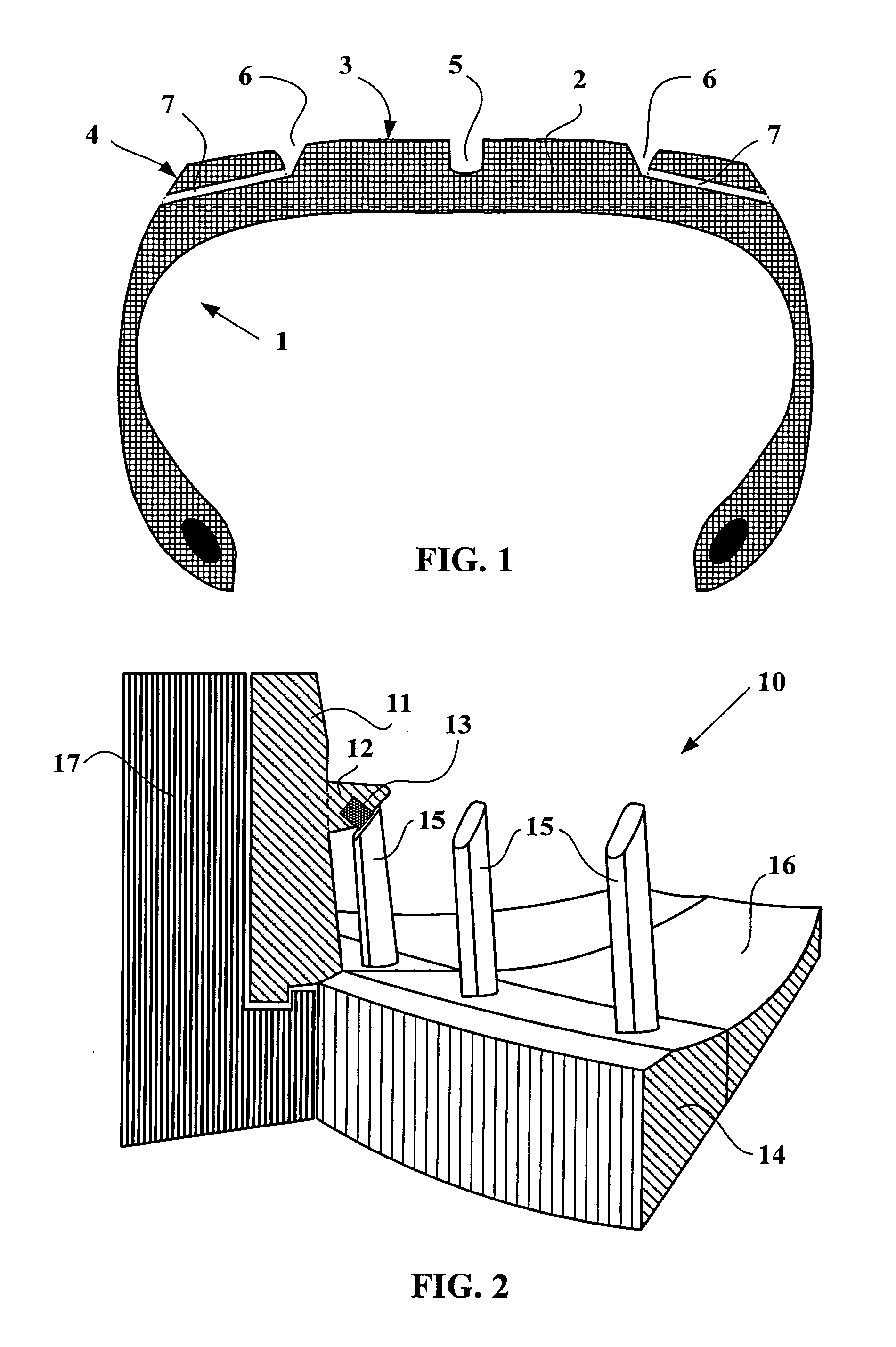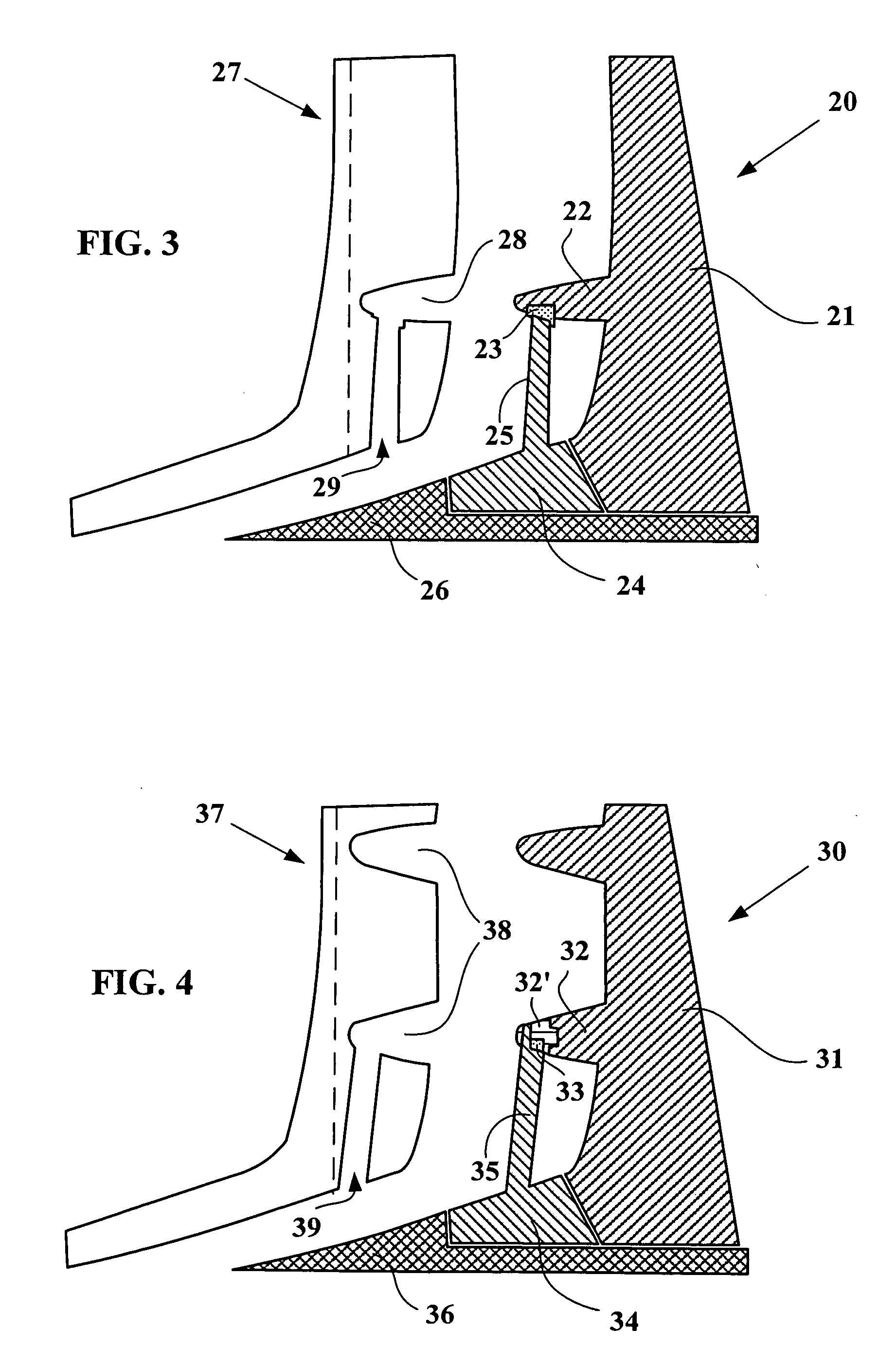Tire tread mold
a technology of tread molds and rubber, applied in the field of molds, can solve the problems of reducing the service life of the buffer, and forming the mix of films, etc., and achieves the effects of reducing the strain experienced by the deformable buffer, good contact, and increasing the service li
- Summary
- Abstract
- Description
- Claims
- Application Information
AI Technical Summary
Benefits of technology
Problems solved by technology
Method used
Image
Examples
Embodiment Construction
[0053]FIG. 1 is a schematic representation of a partial view in radial section of a tire 1 provided with a tread 2 comprising a running surface 3 delimited axially by lateral faces 4. The tread has a central groove 5; other grooves 6 are also disposed over the section. These grooves 6 are connected to the lateral faces 4 by means of channels 7.
[0054]FIG. 2 is a schematic representation of a partial perspective view of a mold 10 according to the invention allowing to obtain a tire 1 provided with channels 7 opening both onto a lateral face 4 of the tread 2 and onto at least one lateral wall of at least one groove 6 of the tread 2 without being closed up by a film of mix.
[0055] The Figure shows the central part 11 intended for molding the running surface 3 provided with a rib 12 comprising a deformable buffer 13. Also shown is a lateral part 14 intended for molding the lateral face 4 of the tread 2. The pins 15 are integral with this lateral part 14. FIG. 2 shows the mold 10 in its ...
PUM
| Property | Measurement | Unit |
|---|---|---|
| molding pressures | aaaaa | aaaaa |
| angle of inclination | aaaaa | aaaaa |
| diameter | aaaaa | aaaaa |
Abstract
Description
Claims
Application Information
 Login to View More
Login to View More - R&D
- Intellectual Property
- Life Sciences
- Materials
- Tech Scout
- Unparalleled Data Quality
- Higher Quality Content
- 60% Fewer Hallucinations
Browse by: Latest US Patents, China's latest patents, Technical Efficacy Thesaurus, Application Domain, Technology Topic, Popular Technical Reports.
© 2025 PatSnap. All rights reserved.Legal|Privacy policy|Modern Slavery Act Transparency Statement|Sitemap|About US| Contact US: help@patsnap.com



